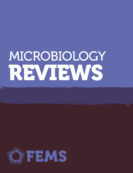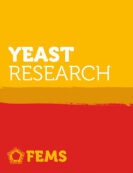FEMS Microbiology Letters Poster Prize: Sam Hickman
Bacterial Protein Export 2018 (BPE 2018)
BPE 2018 provided an overview of recent exciting advances in the study of the various bacterial protein transport pathways, ranging from fundamentals to their impact on pathogenesis and biotechnology and the development of novel anti-bacterials. FEMS Microbiology Letters awarded a prize for the best poster presentation. Read an interview with the winner below.
Sam Hickman
What is your current position, and what was your scientific journey to get there?

I am currently undertaking my first postdoctoral position with Prof Ben Berks and Prof Achillefs Kapanidis at the Dept. of Biochemistry, University of Oxford. Here I am developing single-molecule imaging methods to study folded protein transport in live E. coli.
Previously, I was fortunate to be part of the Wellcome Trust ‘Molecular Basis of Biological Mechanisms’ PhD programme at the Astbury Centre, University of Leeds, which was where I developed my interest in bacterial transporter systems and single-molecule methods.
During my time at Leeds with Dr David Brockwell and Dr Emanuele Paci, I used single-molecule force spectroscopy alongside molecular dynamics and other biophysical methods to show a novel mechanism of force gating in outer-membrane protein transporters (the TonB-dependent transporters) in Gram-negative bacteria (Hickman et al, Nat Commun 2017).
Before my PhD, I did my undergraduate degree in Biological sciences at the University of Leeds. The course provided fantastic exposure to the many disciplines within life sciences and is where I became fascinated in structural and molecular biology.”
Could you describe the research your poster covered?
The Twin-arginine translocon (Tat) system transports fully folded proteins of considerably different sizes across the cytosolic membrane without any leakage of ions. How the bacteria achieve this is an incredible feat, and something we still do not fully understand due to the difficulty of studying the Tat system with conventional structural biochemistry methods.
Therefore, I am using photo-activated localisation microscopy (PALM) single-molecule tracking in live bacteria to capture substrate export via the tat system and alongside this, imaging the membrane components to decipher the assembly of the transporter.
The current advances in cell permeable fluorescent dyes for live cell imaging has allowed me to develop a method of tracking a single substrate in live E. coli for over one minute. This ultra-long tracking enables me to follow the substrate as it travels from the cytoplasm through the tat-system into the periplasmic space.
This method now permits the exciting opportunity to address many unanswered questions about how the system works with single-molecule detail.”
What do you hope to focus your research on in the future?
I am keen to continue using single-molecule techniques to uncover the workings of bacterial transport systems. As single-molecule technology is constantly advancing, it is an exciting time to apply these methods to the bacteriology field, particularly with the antibiotic resistance crisis on the horizon.”
Any further comments?
It has been a great privilege to attend a conference with a purely bacterial transport focus; I have been anticipating a meeting like this for a long time.”
All but one of the FEMS journals are now fully open access (OA), with one journal, FEMS Microbiology Letters remaining a subscription journal with free-to-publish and OA options. Open access is key to supporting the FEMS mission of disseminating high quality research as widely as possible: when high quality, peer reviewed sound science is open access, anyone, anywhere in the world with an internet connection, can read it.







